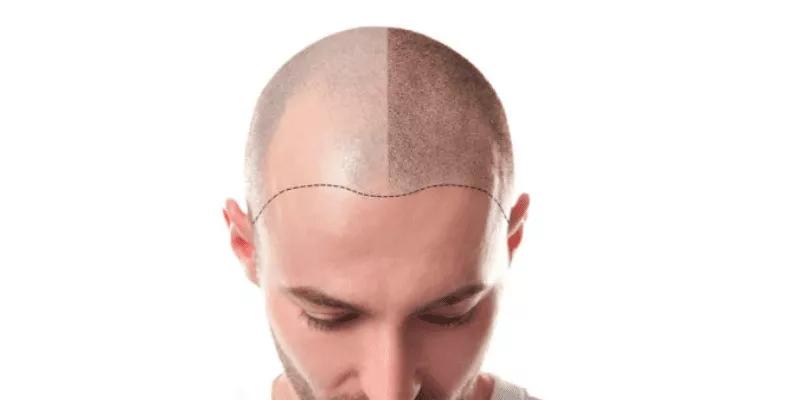How Long After Hair Transplant Before Stubble?
How long after hair transplant before stubble? Many people see beards as signs of manliness and good looks. For others, beards mean not having to shave every day. A generation ago, only a few men had beards. Since then, we’ve raised a generation of men who love their whiskers and let them grow to new lengths.
What if you can’t grow a beard, though? Maybe you don’t have the right genes, or maybe you got hurt and can’t grow hair on your face anymore. Can a beard still be fun? If you think about getting a beard transplant, the answer is yes. And if you want one, now is the time! That’s because beard transplants have improved to the point where the transplanted hair looks and feels natural (after all, it’s your own hair! ), and the procedure itself is part of an exciting and quickly growing field of cosmetic surgery. Would you like to learn more about beard transplants? If you want to get a beard transplant, here are six things you need to know.
How Long After Hair Transplant Before Stubble On Average?
Most beard transplants use a method called follicular unit transfer (FUT), which involves removing and transplanting 2000 hairs at a time to get the best texture and coverage. The doctor makes small cuts in the area of your beard to figure out how it will grow and in what direction. The hair from the source is then put in these cuts. Only a small amount of anesthesia is needed. Where does the hair that has been moved come from?
The hairs that are transplanted come from your own scalp, mostly from the back of the head where the hair is thickest and most like a beard. This lets the cosmetic surgeon choose the best source for the transplant and keeps problems with the color, consistency, and texture of the beard from happening.
What Is Beard Transplant?
As long as your hair on your head is healthy, a beard transplant is a good way to get the facial hair you want. Many men with male pattern baldness are interested in the process of beard transplantation, but they may have fewer options. Know that this procedure is a bit pricey and that insurance doesn’t always cover it.
Beard transplant and moustache men who are losing their hair and can’t get rid of their facial hair at the rate they want. Each type of DHI method is used to grow facial hair.
Men’s self-esteem is affected by their facial hair just as much as by their head hair. Many men also don’t look good, but new ways to change or improve their looks, like growing a fuller beard, give them the chance to try. I’ll tell you what a beard transplant is.
How Mustaches And Beards Are Planted?
As with any other kind of transportation, the process starts with the doctor’s exam. This consultation talks about two main things. The number of grafts that can be taken from the donor area depends on both the needs of the recipient and the number of bald spots that need to be covered (where we get hairs). After the meeting, this operation may start.
One hair behind each ear is pulled out one at a time before each hair follicle starts to grow. Then, these hair grafts are moved to the parts of the face that need them. All of this is done with the help of an implanter pen, as is usual for a DHI transplant (Choi pen). Also, if the patient has a beard and there are a lot of hairs on his face, neck, or chin, those hairs are taken from the bottom.
This part of the Follicular Unit Extraction (FUE) hair transplant process can be done with local anesthesia in the face, but we usually recommend that the DH method be used instead. (The DH method for beards is basically a type of FUE beard cultivation with better sensitivity and more promise for density.) In another routine, like the plantation beard and moustache, there is a lot of pain. There won’t be any scars or stitches on the face, but the area will need to heal, just like in other transport shells.
Changes To Beard Hair Transplant
After a week, a moustache or beard will look very natural where it was sown. Within 15 days, the area where the skin was taken from will heal, and you’ll look like yourself again. If you’re on the road to getting your facial hair back, you’re not likely to have any side effects.
The time it takes to heal and how to do it are the same as with a regular DH or FUE hair transplant. Most of the time, you should stay out of direct sunlight in the area for two months. If you want to fix an area, you shouldn’t shave for a month or a month of intense friction. You should also avoid hot water or high water pressure. You can wash and moisturize your face every day, just like you would in a normal setting. The hair will be poured in the first month (or the week after that). After six months, most of the final result will have been seen. Depending on how many follicles were transplanted, it can take anywhere from 12 to 18 months for everything to grow back the way it should.
Benefits of Getting a New Beard
When you read about the procedure, it may not sound like a lot of fun. However, the truth is that it is almost painless thanks to advances in medicine and how little it hurts. A small pinch is the worst pain you can feel. Beard transplantation isn’t just for the lower part of the face. In fact, you can have beard transplantation done on any part of your beard. With the help of your doctor, you can get hair transplants on your eyebrows, sideburns, or almost anywhere else you are losing hair. Beard transplants don’t take a long time to heal from.
There are almost no side effects. However, few days after the transplant, the skin may be a little red or swollen. How long after hair transplant before stubble? The procedure usually takes about 5 hours and is done in a hospital. After the procedure, you go home right away.
Sowing must be fully healed after a long time and the beard should act like normal hair. You’ll be able to shape and trim your beard normally, and it will grow faster.
How Long After Bariatric Surgery Can You Have Caffeine as a Coffee Drinker?
As someone who enjoys coffee, you may have wondered if it is safe to consume caffeine after having bariatric surgery. The answer to the question “how long after bariatric surgery can you have caffeine?” is with restrictions, after waiting for at least three months. This is because the surgery reduces the amount of stomach acid that is produced, which can affect the absorption of certain compounds found in coffee. In answering, “can you drink fizzy drinks after gastric sleeve or any other bariatric surgery?” you should also avoid any other high-caffeine beverages such as energy drinks and soda. When you do start drinking coffee again, it is important to do so in moderation. Caffeine can cause dehydration and increase your risk of developing kidney stones, so it’s best to limit your intake of coffee to no more than two cups per day. It’s also essential to avoid adding any sugar or artificial sweeteners to your coffee since these can cause problems like gas and bloating. Additionally, be sure to drink plenty of water throughout the day to help keep you hydrated and reduce the chances of developing any complications. We hope this article answers “how long after bariatric surgery can you have caffeine?”






